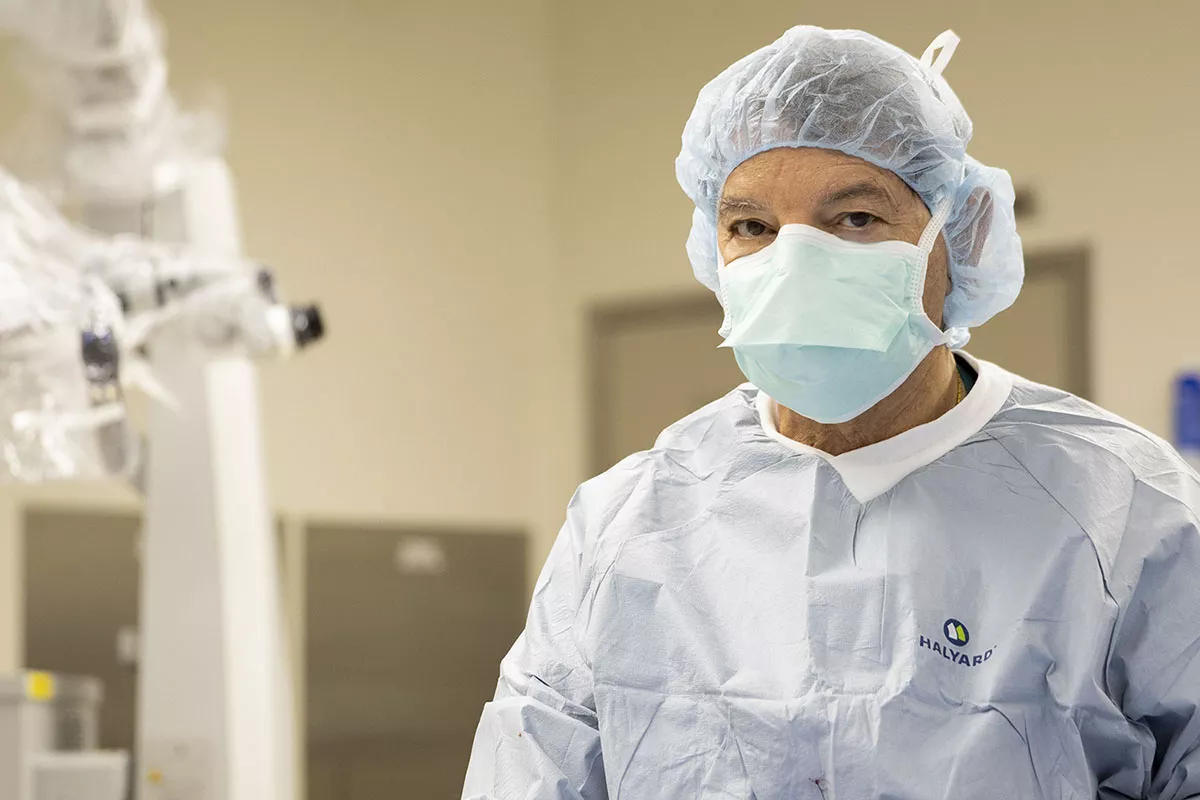UI surgeon performs first robot-assisted cochlear implant surgery

University of Iowa Health Care otolaryngologist Bruce Gantz, MD, has performed the first three robot-assisted cochlear implant electrode insertions in the world using an investigational surgical tool currently in clinical evaluation at University of Iowa Hospitals & Clinics.
Gantz, an international leader in cochlear implant technology, was testing the use of the new technology – a robot that helps guide the placement of the cochlear implant electrode in the inner ear. The technology was developed by iotaMotion Inc., an early-stage medical technology startup, based in Iowa City, Iowa.
Cochlear implants help people with hearing loss to perceive sound. The devices translate sound into electronic signals that stimulate the patient’s auditory nerve to deliver sound information to the brain, allowing the patient to hear.
The surgeries were performed as part of the UI’s clinical evaluation of the iotaSOFT system under an Abbreviated Investigational Device Exemption (IDE). The system was being tested for its use as a surgical support instrument during cochlear implant surgery with adults. Clinical data on the safety and performance of the system gathered during the procedures will be used by the company to seek de novo authorization from the Food and Drug Administration (FDA).
iotaMotion was co-founded by Marlan Hansen, MD, professor and head of the UI Department of Otolaryngology – Head and Neck Surgery, and Chris Kaufmann, MD, who was a UI resident physician in the department and is now President and CTO of iotaMotion. Hansen is the company’s chief medical officer, and was not involved in the surgeries.
The UI has been a center of excellence for cochlear implant advances for almost 40 years. Gantz himself implanted the first multichannel cochlear implant in the United States in 1983. As an expert with decades of experience with these surgeries, Gantz hopes the consistency and precision a robotic system could add might allow more surgeons to offer the procedure.
“Putting the electrode in the cochlea by hand is such a delicate operation,” he says. “The robotic assistance is designed to help do this more smoothly and with lower forces. It went in very nicely and we were able to get X-ray confirmation that the electrodes were in proper position in the cochlea.”
“These first surgical procedures utilizing the iotaSOFT system are a critical step forward in merging precision robotic tools into the cochlear implant surgical workflow,” adds Kaufmann. “We are grateful for Dr. Gantz’s participation in the first clinical implementation of the system. We look forward to the continuation of this investigational study, and further development of important surgical assistive technologies in the cochlear implant space.”